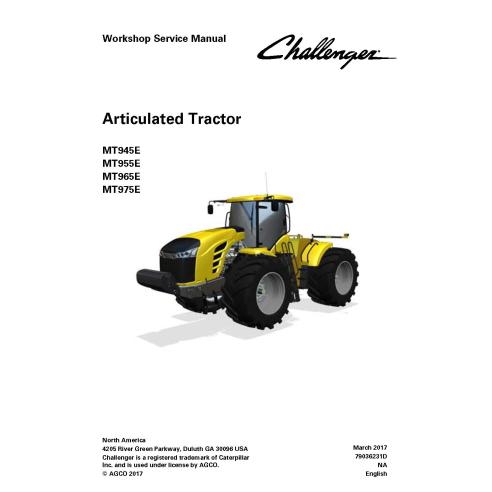Challenger MT945E / MT955E / MT965E / MT975E tractor workshop service manual
Format: PDF
Pages: 2755
File size: 44,85 MB
Workshop service manual for Challenger MT945E / MT955E / MT965E / MT975E is available for instant download after purchase at any time. Can be downloaded and viewed on any device. Download free preview PDF file using link in Attachments TAB
Challenger brand history dates back to 1960 when Massey-Ferguson, a Canadian farm machinery manufacturer, launched a line of tractors under the Challenger brand name. In the 1980s, the company expanded its product line to include combines, sprayers, and other agricultural equipment.
In 1997, Caterpillar Inc., the global construction and mining equipment manufacturer, acquired the Challenger brand from Massey-Ferguson. Caterpillar continued to manufacture agricultural equipment under the Challenger brand, expanding its product line to include row crop tractors, track tractors, and other agricultural machinery.
In 2002, Caterpillar also introduced a line of high-horsepower articulated tractors under the Challenger brand name, targeting the construction and mining markets. These tractors were designed to provide high productivity and efficiency in heavy-duty applications.
In 2011, AGCO Corporation, a global manufacturer and distributor of agricultural equipment, acquired the Challenger brand from Caterpillar. AGCO continued to manufacture and sell Challenger tractors, sprayers, and other agricultural equipment, expanding the product line to include precision farming technologies and other advanced features.
Today, Challenger is a well-known brand in the agricultural industry, offering a wide range of products that are designed to help farmers increase productivity, reduce costs, and improve yields. The brand is recognized for its innovation, reliability, and commitment to customer satisfaction, and it continues to play a significant role in the global agricultural equipment market.
